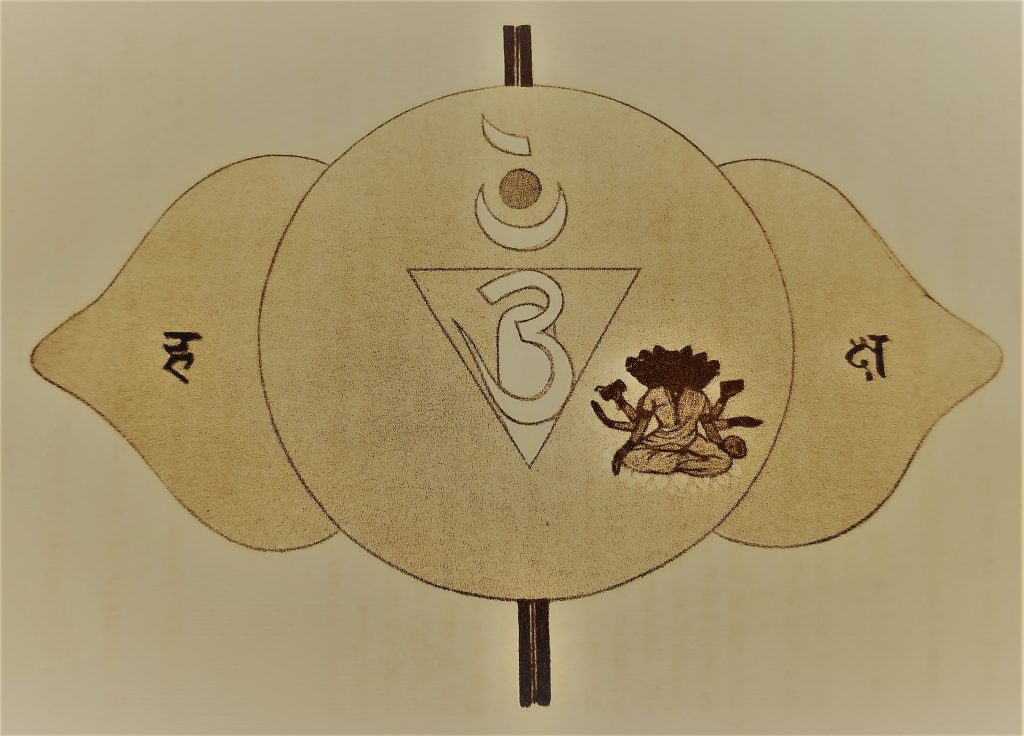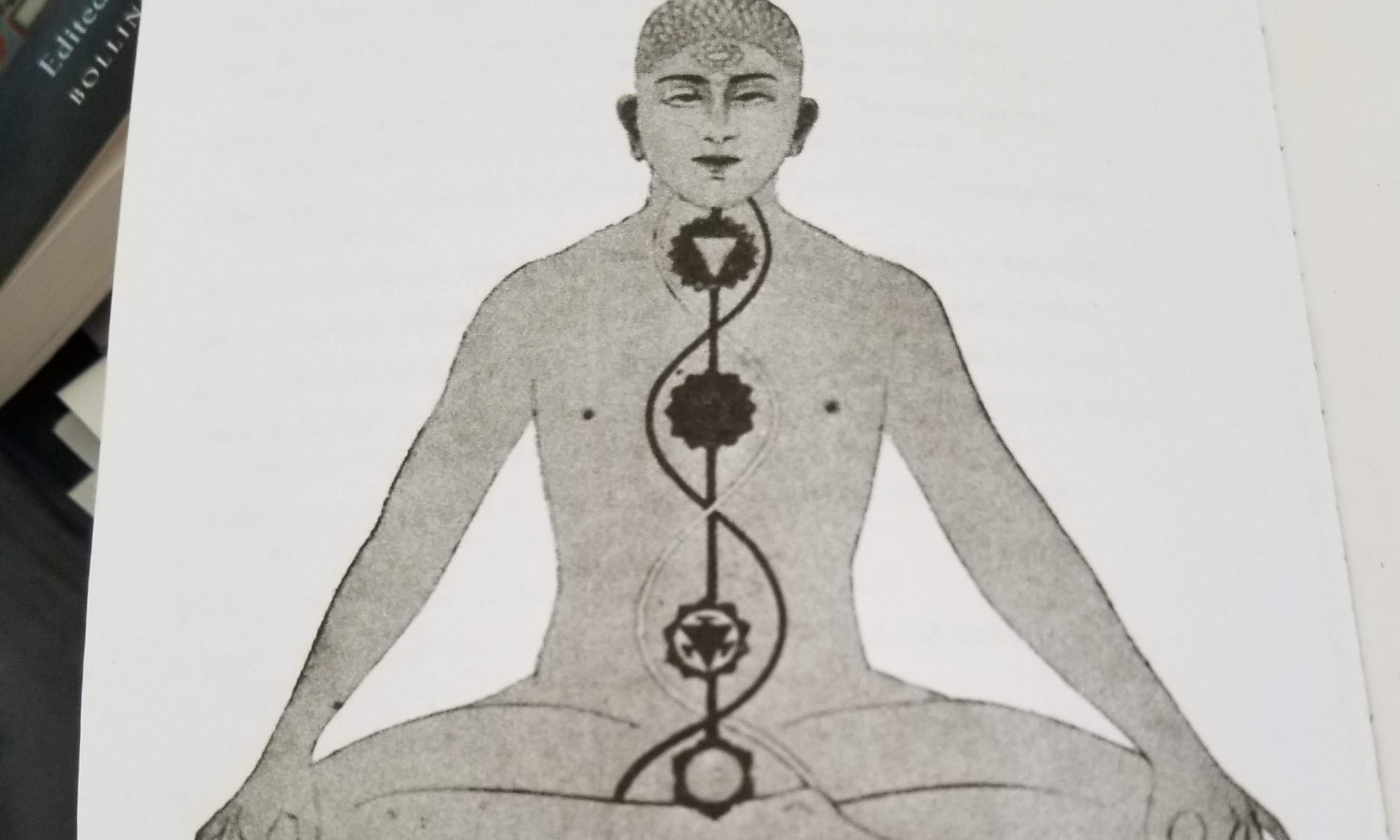“This is the incomparable and delightful abode of Vishnu. The excellent yogi at the time of death joyfully places his prana here and enters that supreme, eternal, birthless, primeval deva, the purusa, who was before the three worlds, and who is known by the Vedanta.”
Description of the Six Centres, Verse 38
Ajna – the third eye chakra
The highest corporeal center is the ajna chakra. Commonly referred to as the “third eye chakra,” this chakra is located between our two physical eyes and is considered the location of wisdom and of conscience. It is considered a sacred spot.
Ajna translates as “command,” “authority,” “perceive,” “knowledge,” or “wisdom.” Any of these translations relate to our accessing our conscience, our inner guide, our intuition. When our third eye is open, we are in touch with our intuition, we cut through the illusion of perception to access truth. It not only helps us to make good decisions, but at the extreme is said to give us access to psychic powers. With the opening of this chakra, the development of our wisdom and humanity is completed and we reach the bridge to divine consciousness.
The ajna mandala is described as a transparent lotus flower with two white petals, said to represent the nadis (energy channels), Ida (feminine energy) and Pingala (masculine energy). Ida and Pingala converge with the Sushmna nadi (the central energy channel which is the path of Kundalini) at ajna, creating a sense of oneness and unity.

Another way of looking at this is that at the ajna chakra, we become aware that there is no duality (light/dark, male/female, etc.) that these are just expressions of a continuum. For example, rather than hot and cold, something is described as having more-or-less coldness. In the same way, something isn’t bad, it is just lacking goodness to whatever degree. This realization creates psychic space where we can experience the bliss of the oneness of the universe.
The seed syllable of ajna is “om” which is believed to be the supreme sound of the universe and contain all other sounds. “Om” represents the three worlds (past, present, and future) that are accessed through the ajna chakra (the past and present are perceived with our physical eyes and the future is perceived by our third eye).
When we have a blockage at the ajna chakra, it may manifest in physical symptoms such as vision problems, headaches, migraines, and dizziness or in mental symptoms such as confusion and an inability to think clearly. By opening ajna, we access our ability to see things without the projection and color of ego. We accept ourselves and others and to treat everyone (including our self) with love, understanding, and forgiveness. We have the clarity and wisdom to recognize the truth that is always around us and the knowledge that we can look within for the solutions to our problems.
Jung describes ajna as the pure sphere of detached observation. Here you become a non-ego reality, a thing not even to be called “self.” The ego disappears completely; the psychical is no longer a content within us but we become contents of it.
And now it’s time to bring Maslow’s hierarchy back because here we can relate ajna to Maslow’s concept of self-actualization. For Maslow, self-actualization is the level at which an individual is able to maximize their full potential. A self-actualized person is able to resolve the dichotomies inherent in life experiences through creative activity. Wait, that sounds familiar…in the ajna chakra we realize that there is no duality…
Ok, so we have reached a higher level of consciousness when we no longer interpret the world around us in terms of opposing forces. This is the detachment that enables us to view our existence without ego – we are not a part of the universe; we are one with the universe.

